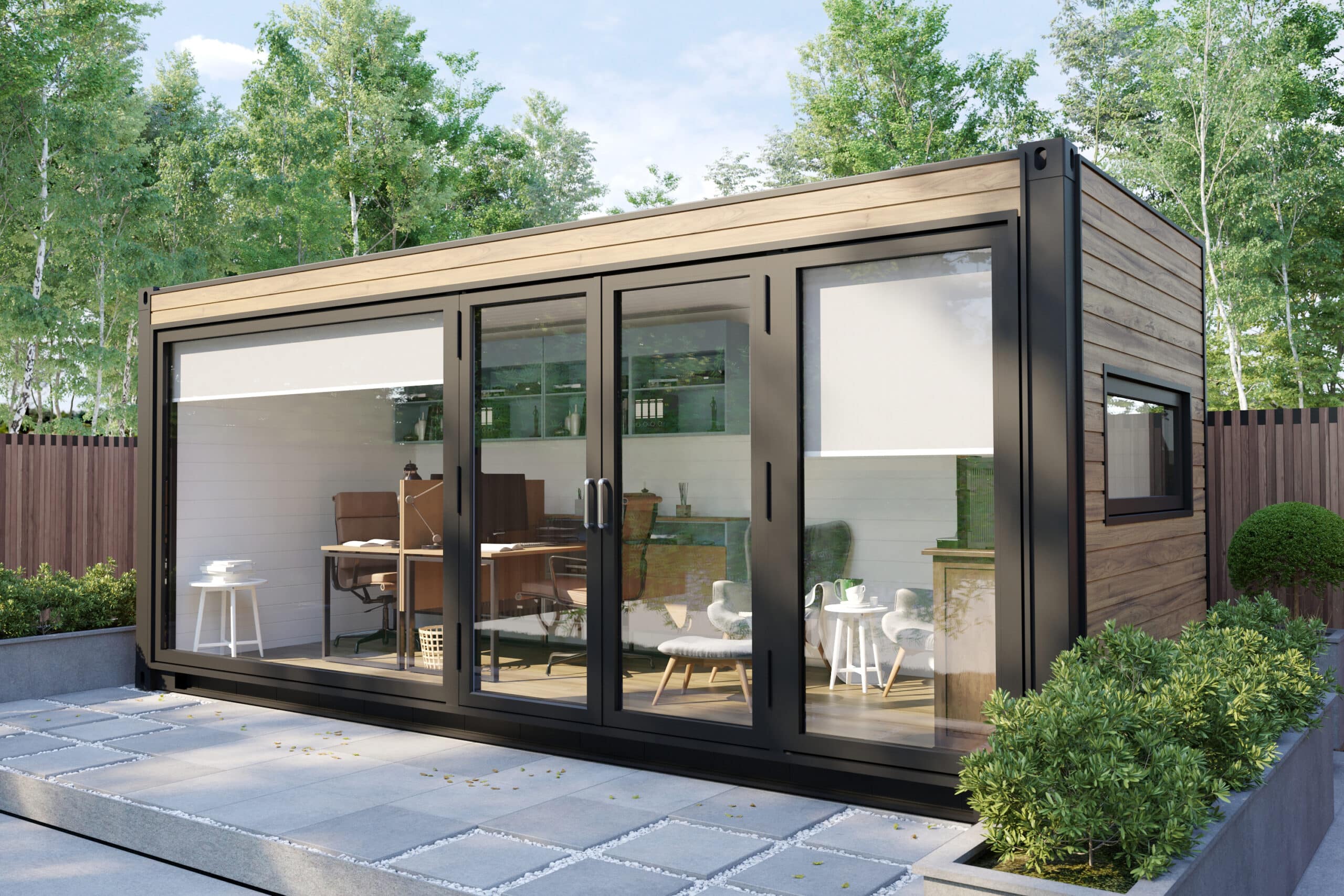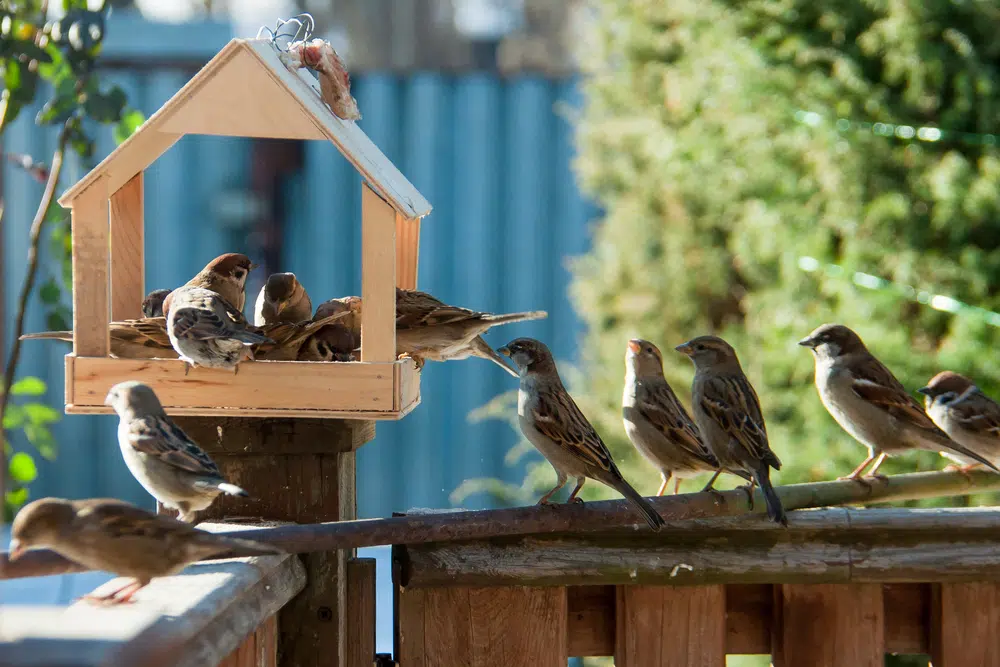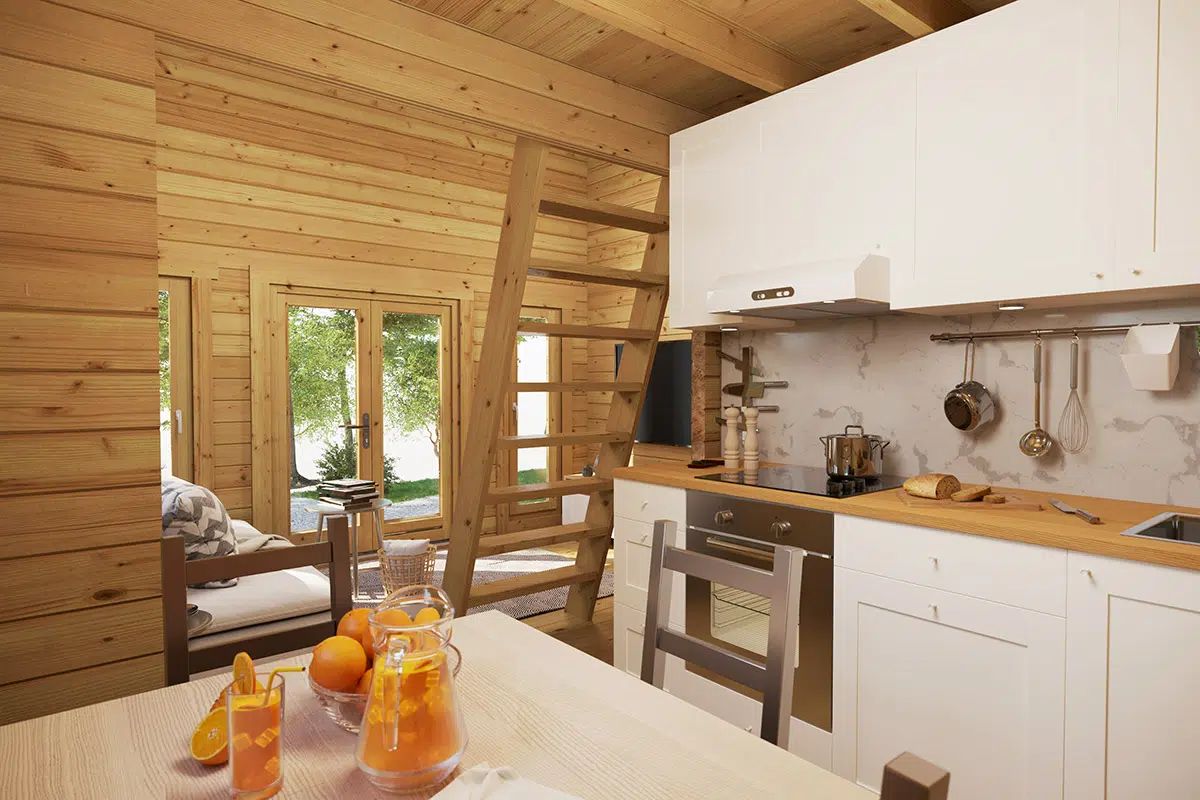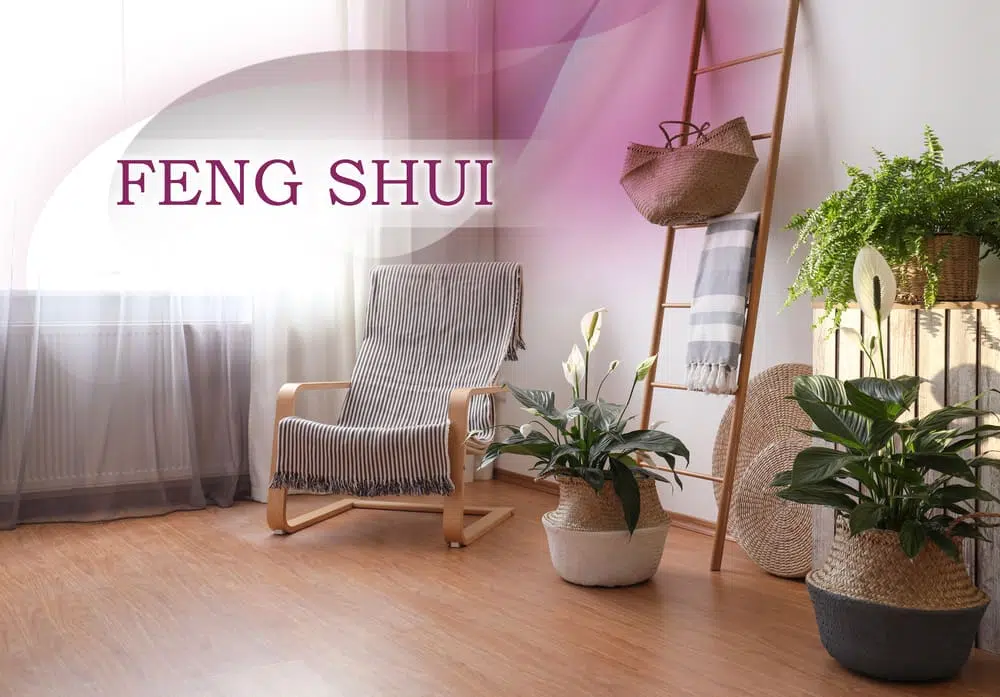Wooden Garden Shed, Plastic, or Metal? Which Material is The Best Choice for Your Shed?
19.09.2017
Building an outdoor garden shed, a storage shed, or a garden room is probably the easiest way for most to add much-needed storage space or living space. However, the traditional wooden shed has got competition by sheds from metal or even plastic, promising easy construction and maintenance-free usage.
Even though the decision for a certain material is always also influenced by the targeted usage, like for example a garden lounge would be more welcoming and cosier from wood than from plastic, while for a garden storage box, plastic might be a better choice, there are some common features, pros, and cons for each material that we will list in the following article.
Plastic garden sheds
Plastic sheds are also called resin sheds, vinyl sheds, or polyethylene sheds.
Pros:
- They are, of course, lighter than their competition, and promise easy maintenance and long durability.
- Cleaning just with water, maybe a garden hose, and soap.
- The more expensive models are made more sturdy by integrated steel supports and even double-walls and might offer accessory options like shelving, windows, skylights, and peg strips that can be added without drilling needed.
- Neither water nor mud, rust, fungi or insects will affect them, their biggest selling point being the lack of necessary Obviously, sunlight is the one thing, that makes plastics hard and brittle by and by so that the better ones also boast a UV-protection.
Cons:
- The lightness is a pro if you want to move the shed from one place to another. When it comes to storms, it is a con, because it would require thorough anchoring to the ground for it to not fly around.
- Due to the material, most models are much less sturdy than wooden sheds or those made of metal. So they would probably be the better choice if you are looking for smaller constructions like storage boxes or small storage sheds.
- A price advantage vanishes quickly if you consider models with a higher quality offering steel reinforcements and accessories.
- Plastic is not customizable. So fixing a row of hooks to the wall, making a shelf, or a storage space under the roof, adding an outdoor canopy, fixing a work bench to the walls etc. is hardly possible without risking destroying the plastic due to overstressing. Changing the appearance by painting or adding shingles to the roof are also no options for a plastic shed.
- Plastic is not breathable. And it does not conserve temperature. Thus, sudden changes in temperature have to be expected which might also result in condensation. So we would advise against storing metal things there that are prone to rust, or seeds, electronics or anything that you don’t want to get wet. Also, plastic walls don’t make a lovely living room for the same reasons. So a plastic shed might be much better suited as a storage box than as a garden office, for example.
- Especially bigger, more dominant buildings in the garden are expected to have a pleasant look. Even though manufacturers of plastic sheds try to follow up to that demand, the building will be much less customizable in regard to its appearance and how it harmonizes with the natural surroundings
- Plastic is not natural. It is made out of oil and it poses a waste problem. The ecological footprint of a wooden shed is most probably much better
- What you smell, when you enter a room with lots of plastic in it, is the plasticizer that makes the plastic soft. You smell it because it evaporates out of it. So UV-protection or not: As a result of changing weather conditions, especially as a result of heating up, the plasticizers will leave the material until it becomes brittle. That’s the way of life of all plastic unless it is buried underground or in the water.
Bottom line:
We believe the limited lifespan due to the sunlight to be one serious con. So if you are ok with this, a plastic storage shed might be a choice, but when it comes to rooms where people want to stay like garden rooms, garden offices, workshops etc., we think the feeling would be better in a breathable environment and you would better make an investment in a more durable option.
Metal garden sheds
Metal sheds are made of either steel or galvanized aluminium.
Pros:
- One of the greatest pros is certainly their price as they are usually the cheapest of the three options.
- Maintenance: They are basically maintenance-free except the usual greasing of door hinges.
- They are durable. No problem with rotting or insects. Metal sheds are not affected by heat, cold, or sunlight.
Cons:
- Sturdiness and weight: As with plastic sheds, it is recommended to purchase an additional anchoring kit to ensure it stays in place during storms.
- The sunlight being the weak point with plastic sheds, rust is the weak point for metal sheds. Rust usually first appears in much-used areas, where the coating wears off quickly like in the door area.
- The appearance is usually not as appealing as with wooden sheds. They can be painted, but once they are, they probably need frequent repainting to maintain a fresh look which then nullifies the pro of maintenance-freedom.
- As with plastic sheds, the inside temperatures will change quickly with the weather, the material is not breathable, and so the problem of condensation is also there which is a serious con for all who are looking for a constantly dry storage space. You will need an electrical ventilation if you want to store things made of metal, electronics, textiles, or cushions.
- Most metal sheds have no floor. So you need to lay a floor which would better be well drained and dry or else you will have additional problems with moisture rising from the ground and then being trapped inside.
- Customizing meets the same problems as with plastic sheds. Do you drill a hole through the metal to fix something? Then you might get rust in that hole very quickly.
- Not well suitable for living space. Have you ever been under a tin roof in the sunshine? Compared to the comforts of wooden buildings, neither plastic nor metal can compete.
Bottom line:
Metal sheds may be a great temporary solution to make some space somewhere if your budget doesn’t allow for a better option. However, for a variety of reasons, like micro climate and insulation, we would not recommend them for mixed usages or if you want to spend time in there like in a workshop or a garden room.
Wooden Garden Sheds
Wooden garden sheds are made from a large variety of suitable wood species. Wood is the traditional material for a garden shed for a variety of reasons
Pros:
- Wood can be completely customized by most average DIY-ers to create just the shape, size, or style they prefer. This is true for the appearance which can be customized with paint in different colours, by adding unique features like cupolas, canopies, outside storage boxes as well as the inside where you can fix hooks or shelves on the walls, large window sills to raise seeds early in the year, build storage attics or other overhead loft areas if you have a pitched or pointed roof, or even add an inner or outer insulation to the shed with an additional panelling.
- The material is breathable and a very good insulator. Thus, it keeps cool on hot days and warm on cold days. Changes in temperature take more time and changes in moisture are absorbed by the wood so that condensation usually is no problem in a wooden shed. These features also make the wooden shed the best option for any shed to spend time in, as for example in work shops, garden lounges, fitness rooms, or during garden parties. There are main houses built with timber, so there is no question that wood is very well suited to make a comfortable living environment.
- Wood is a natural material that optically fits well into a natural environment like a garden.
- Timber is very sturdy and solid from thin walls of 21mm to thick walls of 92
- Wood is the most traditional material for garden sheds which means that there are a lot of experiences with wood.
- Wood is the most environmentally friendly option. It is a renewable resource and there is no problem getting rid of it once it goes to waste.
- As wooden garden sheds can be constructed by any average DIY-er, that also means that they can be deconstructed at any time, and rebuilt at any other place. There even is a market for second-hand wooden garden sheds.
- Being the traditional choice, wooden sheds also have the largest choices in size, style, wall thicknesses and floor plans from a small garden box to large summer houses with 2 bedrooms and 70 sqm of living space.
Cons:
- Wood needs regular maintenance and protection from water. So you will have to make sure that your roof is tight and the ground area is well drained. Walls getting wet regularly should be treated with a preservative treatment suitable for your wood species every few years. However, most wooden garden sheds come with a warranty of 5 years and some of them are sold pressure treated or dip treated so that there will be no problems for the first 5 to 10 years.
You will also be able to choose the appearance of your wooden shed by choosing a trendy colour or using a treatment that conserves the natural wood look.
Bottom line:
Wood offers the most choices when it comes to an evolution of usage or for mixed usages because it is a material well suited to live in. It is sturdy, durable and maintenance is limited to keeping the water away and a treatment every 5 to 10 years. The traditional wooden garden shed fits well into the appearance of your garden and makes it an inhabitable part of your home. It is not the cheapest material, but it represents the most promising investment out of the three choices.
Categories:
Useful TipsWant to discuss over phone. Let us call back to you
If you need any additional info regarding any product, please fill in the below form and we will get back to you, usually the same or next working day.
Have any questions regarding some product?
If you need any additional info regarding any product, please send us your questions.



